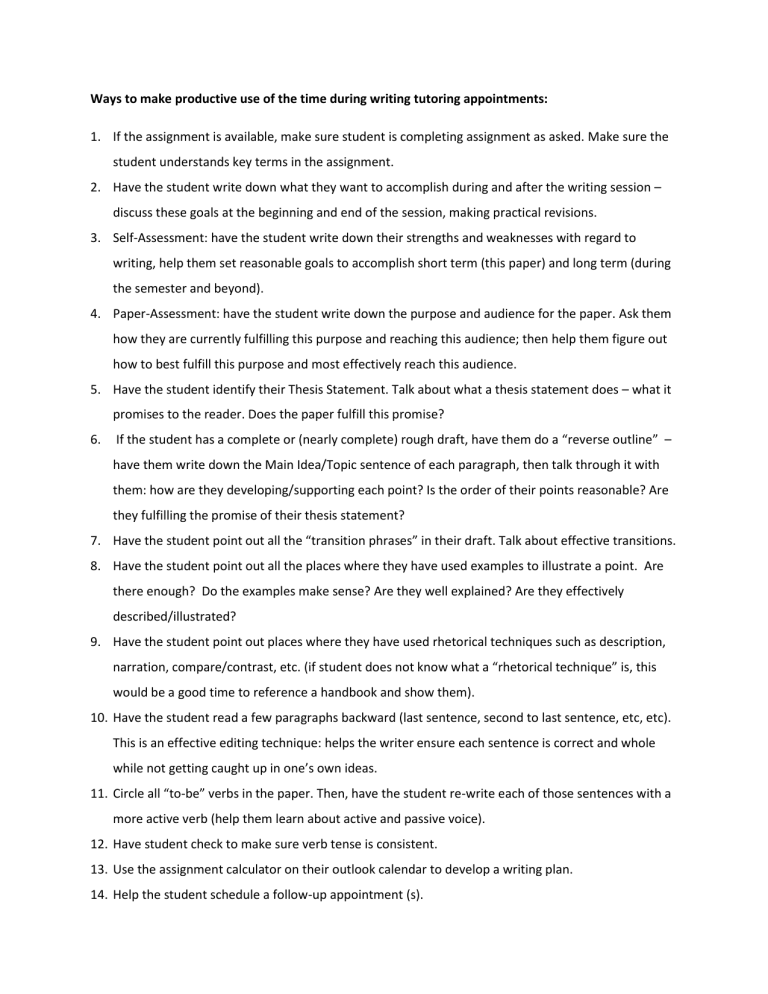Ways to make productive use of the time during writing...

Ways to make productive use of the time during writing tutoring appointments:
1.
If the assignment is available, make sure student is completing assignment as asked. Make sure the student understands key terms in the assignment.
2.
Have the student write down what they want to accomplish during and after the writing session – discuss these goals at the beginning and end of the session, making practical revisions.
3.
Self-Assessment: have the student write down their strengths and weaknesses with regard to writing, help them set reasonable goals to accomplish short term (this paper) and long term (during the semester and beyond).
4.
Paper-Assessment: have the student write down the purpose and audience for the paper. Ask them how they are currently fulfilling this purpose and reaching this audience; then help them figure out how to best fulfill this purpose and most effectively reach this audience.
5.
Have the student identify their Thesis Statement. Talk about what a thesis statement does – what it promises to the reader. Does the paper fulfill this promise?
6.
If the student has a complete or (nearly complete) rough draft, have them do a “reverse outline” – have them write down the Main Idea/Topic sentence of each paragraph, then talk through it with them: how are they developing/supporting each point? Is the order of their points reasonable? Are they fulfilling the promise of their thesis statement?
7.
Have the student point out all the “transition phrases” in their draft. Talk about effective transitions.
8.
Have the student point out all the places where they have used examples to illustrate a point. Are there enough? Do the examples make sense? Are they well explained? Are they effectively described/illustrated?
9.
Have the student point out places where they have used rhetorical techniques such as description, narration, compare/contrast, etc. (if student does not know what a “rhetorical technique” is, this would be a good time to reference a handbook and show them).
10.
Have the student read a few paragraphs backward (last sentence, second to last sentence, etc, etc).
This is an effective editing technique: helps the writer ensure each sentence is correct and whole while not getting caught up in one’s own ideas.
11.
Circle all “to-be” verbs in the paper. Then, have the student re-write each of those sentences with a more active verb (help them learn about active and passive voice).
12.
Have student check to make sure verb tense is consistent.
13.
Use the assignment calculator on their outlook calendar to develop a writing plan.
14.
Help the student schedule a follow-up appointment (s).
